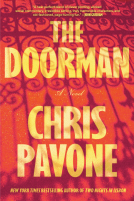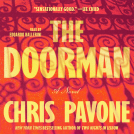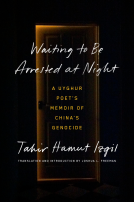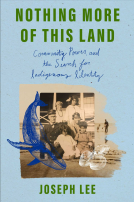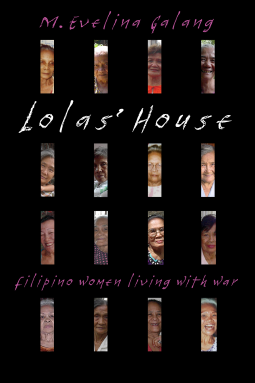
Lolas' House
Filipino Women Living with War
by M. Evelina Galang
This title was previously available on NetGalley and is now archived.
Send NetGalley books directly to your Kindle or Kindle app
1
To read on a Kindle or Kindle app, please add kindle@netgalley.com as an approved email address to receive files in your Amazon account. Click here for step-by-step instructions.
2
Also find your Kindle email address within your Amazon account, and enter it here.
Pub Date Sep 15 2017 | Archive Date Aug 07 2017
Northwestern University Press | Curbstone Books 2
Description
M. Evelina Galang enters into the lives of the women at Lolas’ House, a community center in metro Manila. She accompanies them to the sites of their abduction and protests with them at the gates of the Japanese embassy. Each woman gives her testimony, and even though the women relive their horror at each telling, they offer their stories so that no woman anywhere should suffer wartime rape and torture.
Lolas’ House is a book of testimony, but it is also a book of witness, of survival, and of the female body. Intensely personal and globally political, it is the legacy of Lolas’ House to the world.
Advance Praise
“This book is the last stand of women who survived the kidnapping and rape that was Japanese army strategy in World War II. Courageous, aged grandmothers tell their stories and show their wounded bodies to Evelina Galang as evidence that these crimes occurred. Hopefully, Lola’s House will end denial and get justice, reparations, and a place in the history books for these women and their 400,000 sisters.” —Maxine Hong Kingston, author of The Woman Warrior: Memoirs of a Girlhood among Ghosts
Available Editions
| EDITION | Other Format |
| ISBN | 9780810135864 |
| PRICE | $18.95 (USD) |
| PAGES | 224 |
Featured Reviews
 Kate K, Reviewer
Kate K, Reviewer
Content Warning: This book contains explicit descriptions of rape and torture that could be triggering to some survivors.
Lolas' House is part history book, part memoir, and part biography. Eveline Galang interviews sixteen women who survived imprisonment as Japanese "comfort women" during World War II. These "women" were most often young girls, barely teenagers, stolen off the streets while running errands with siblings. They watched as parents, siblings, and spouses were tortured and murdered before they themselves are hauled away and forced into sexual slavery.
Galang mingles her own personal narrative with the testimonies of the survivors and the history of Filipino life during WWII. It is impossible to not be moved by the strength of these women. They have experienced the worst that humanity has to offer. Not only were they stolen from their homes as children but after daily rapes and slavery, many were rejected by their families upon their return. Yet, the women pushed on and now as very old women, they are fighting the Japanese government.
The only real issue with the book is that it immersed in the history and culture of the Filipino people. As someone outside of that circle, I would have liked a little more context around some of the traditions that are discussed. Likewise, there is some dialogue that is in the original languages of the women. This is noted in the author's introduction but it was difficult to understand the longer passages. However, this in no way diminishes the book for me -- it's still an exceptionally moving read.
Lolas' House comes at a pivotal moment. Many of the lolas express their desire to end war. They say over and over that they hope to keep other children safe from this fate. With the world poised on the edge of the cliff, I would behoove everyone to read Galang's book. It is an incredibly powerful testimony to the horrors of war and the power of the human spirit to persevere. We cannot let this happen again.
 Krystal Kavita J, Media/Journalist
Krystal Kavita J, Media/Journalist
I had only encountered M Evelina Galang's brilliant works of fiction but the revelation that is this culmination of her research on women's war wounds is meaningful and should be read by all!
 Alison G, Bookseller
Alison G, Bookseller
This was a powerfully moving read. I had read a novel about Japanese comfort women previously, and was thus immediately interested in another nation's perspective. Part of a larger project by the author, the book weaves between the narrative of the project, the testimonies of the women, and other poignant moments throughout the history of the war and the women themselves. I was immediately drawn in to writing, and found it hard to put down even through the harsh realities that these women suffered through.
I enjoyed that the author left the testimonies somewhat untranslated, preserving the language of the lolas and the integrity of the stories. The most powerful piece for me was the tapestry hand-woven by one of the women, depicting the story of her life through textiles. Even in black and white, it was stunning.
The importance of this book, and these stories, cannot be overstated. There were so many moments of laughter and joy captured in the snapshots of their personalities ... and so many moments where I was SO ANGRY on behalf of these women for the way the governments in both the Philippines and Japan were dismissive of their trauma. Be prepared to laugh, and to cry, and to leave with a greater sense of empathy and anger over the injustices that so often go unacknowledged in this world.
 Reviewer 392033
Reviewer 392033
Honestly, this one is incredibly hard to read and I had to tackle it in chunks so as not to get too downhearted about the awful history involved here.
Lola's House tells the tales of a number of 'comfort women', girls and adult women abducted and brutalised by the Japanese during World War II. These women have, since first emerging to tell their tales in the relatively recent past, been fighting for recognition and apology from the Japanese government. They are now old and slowly passing away one by one.
The 'comfort women' who were interviewed for the stories presented in the book are portrayed exactly as they are and the legitimacy of those voices is key to telling stories like this. In this sense, the author has made an admirable representation of the women in question, and reduced her own participation to that of an observer. It means that the reader sees the tales in the voices of the women themselves. There is no sanitising their experiences and that makes this harder to read than other books which tackle such prevalent violence against women. As a result, it's a must-read for any person who seeks to understand the parts of war that are so rarely discussed, but which leave marks that last forever.
 Elaine A, Reviewer
Elaine A, Reviewer
I received an ARE of this book from NetGalley. This is my honest review.
We are immersed in paragraphs and passages which describe Filipino women's memories of their experience during the Second World War, when the Filipines was invaded by the Japanese.
We read of abductions into sexual slavery, the witnessing of atrocities against their family members, the witnessing of rape and torture of other women and young girls in the 'camps' set up by the invading Japanese army.
The author is a researcher and she mixes passages from the survivors, with her own impressions of them and of their lives currently at Lola's House, where the women meet after a campaign to 'out' the atrocities of the war, supported by the Filipino media and international women's organisations.
The author, herself with Filipino ancestry, is clearly moved by the women and their lives. When she first goes to interview the women, she takes with her several young American girls who befriend the survivors and we also see the reactions of these young girls. I found this mix riveting and we really experience the girls' view of the women.
The survivors accounts are horrific.
They are told by women now in the eighties and nineties, many of whom had never told their family members what they suffered. They kept their experiences a secret because of the shame piled on them by society after the war.
This was made more complicated (I understand) by the fact that many villagers fought as guerrillas and fled to the mountains, whereas the camps were in the cities and urban areas full of Japanese (therefore there were few actual Filipino witnesses who were not either imprisoned themselves or collaborators).
At the end of this book, I felt the most sadness over the fact that the women's hopes and campaigning for an official apology from the Japanese government, have not been realised - even after years of fighting for justice and with the backing of the US Senate.
The women are so old, there will be few left soon.
I found their courage in the telling of their stories deeply moving.
I was glad to be an honest witness to their experiences and felt the reading of the book to be an act of solidarity - in defiance of the lack of political will to recognise how terribly these women suffered at the time and then throughout their lives in the silence.
I also could not help thinking of the Japanese perpetrators and whether any of them are still alive. Since most of the women were abducted when they were young (12, 13, 14 years old...) and the soldiers were older then I suppose this is unlikely.
The photographs in the book make each of the women more real.
Congratulations to the author for her work in documenting these important stories.
I give this book 5 stars for the women's stories.
I dropped it to 4 stars because of the style of documenting, in which the experiences are mixed in with reflections, campaigning, visits to the women's home villages - but this was not done in a linear manner and made it a little difficult at times to follow the threads.
The women felt very real to me and this is a book that will stay in my mind for a long time.
Readers who liked this book also liked:
Jodi Picoult; Jennifer Finney Boylan
General Fiction (Adult), Literary Fiction, Women's Fiction
Tahir Hamut Izgil
Biographies & Memoirs, History, Nonfiction (Adult)





